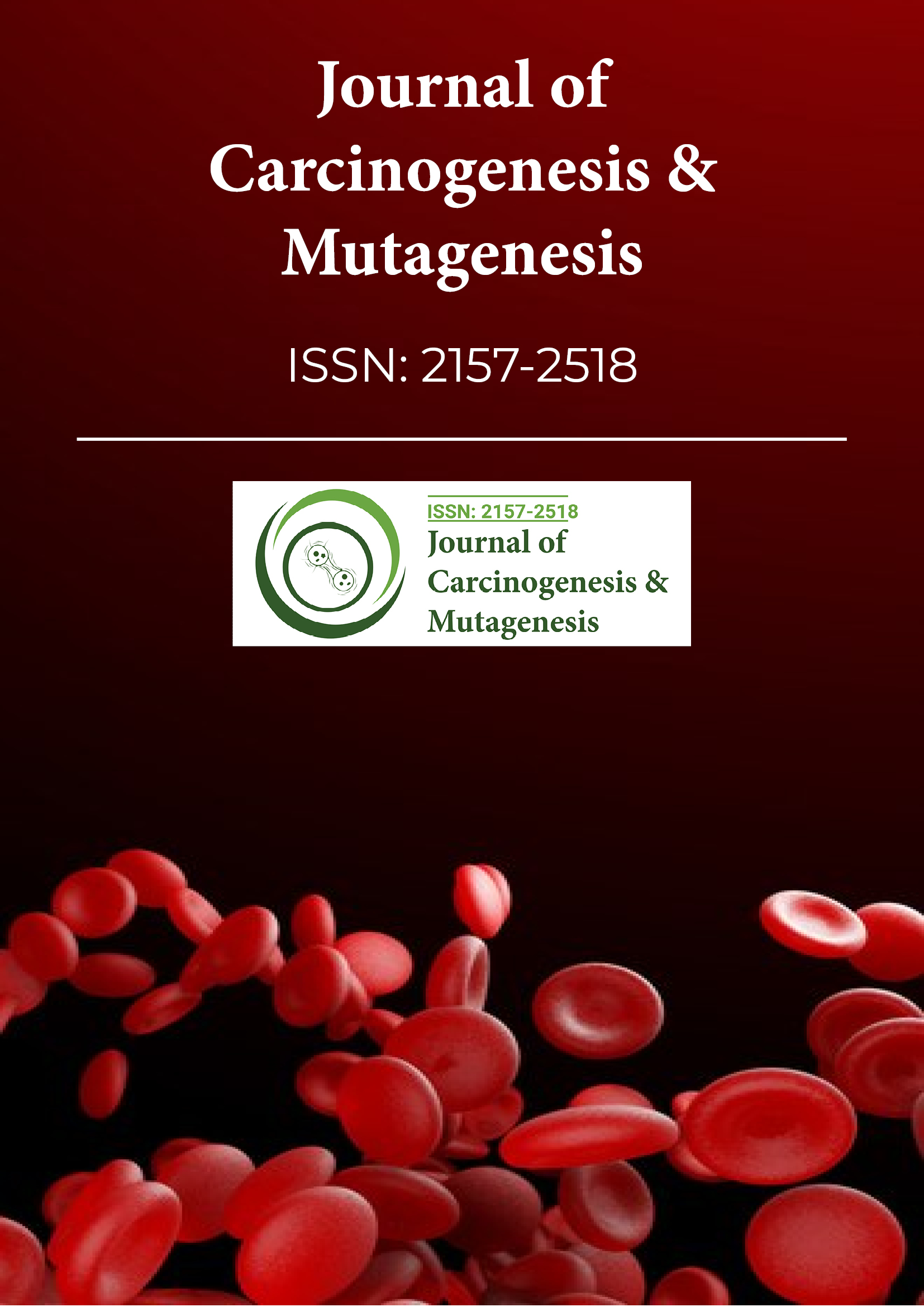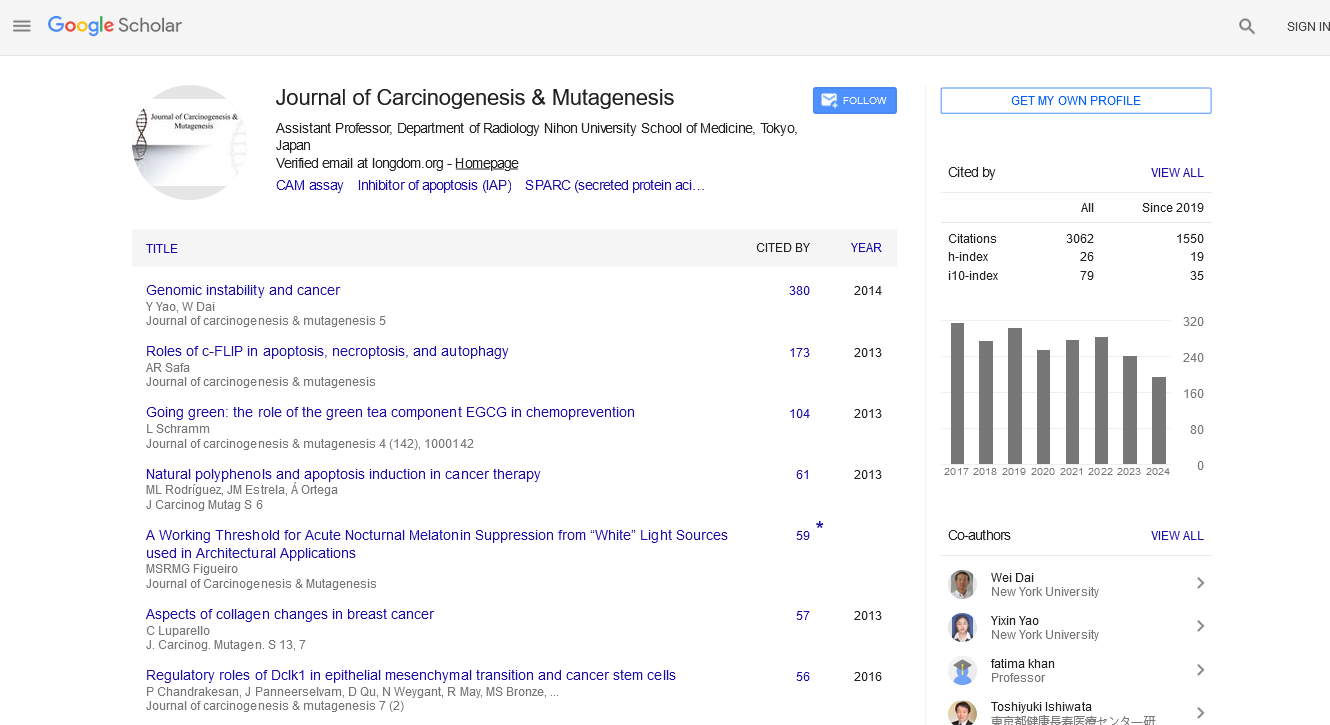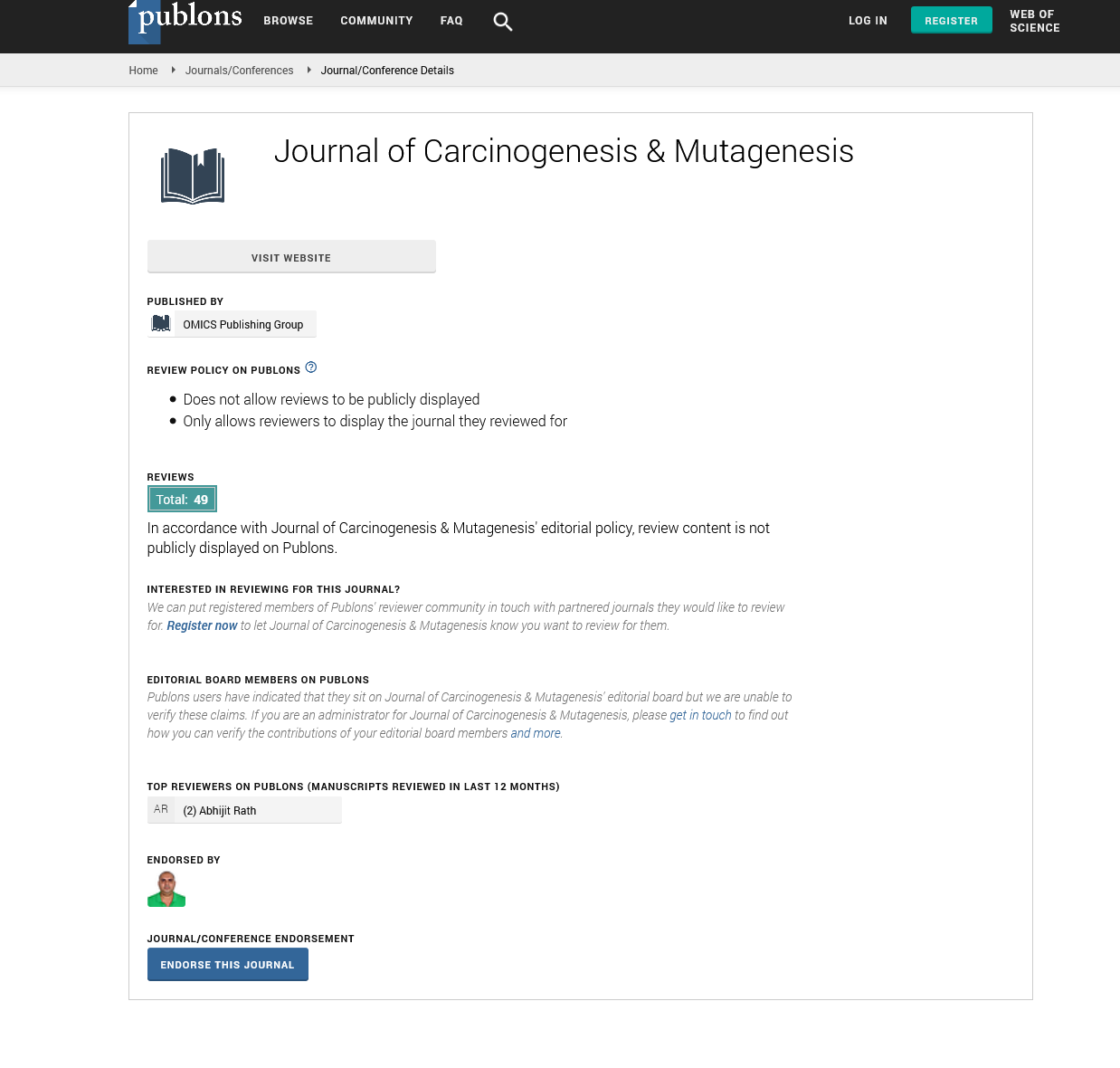PMC/PubMed Indexed Articles
Indexed In
- Open J Gate
- Genamics JournalSeek
- JournalTOCs
- Ulrich's Periodicals Directory
- RefSeek
- Hamdard University
- EBSCO A-Z
- OCLC- WorldCat
- Publons
- Geneva Foundation for Medical Education and Research
- Euro Pub
- Google Scholar
Useful Links
Share This Page
Journal Flyer

Open Access Journals
- Agri and Aquaculture
- Biochemistry
- Bioinformatics & Systems Biology
- Business & Management
- Chemistry
- Clinical Sciences
- Engineering
- Food & Nutrition
- General Science
- Genetics & Molecular Biology
- Immunology & Microbiology
- Medical Sciences
- Neuroscience & Psychology
- Nursing & Health Care
- Pharmaceutical Sciences
Opinion Article - (2023) Volume 14, Issue 3
Molecular Imaging Revolution: Assessing Antitumor Effects at the Cellular Level
Vicente Valero*Received: 29-May-2023, Manuscript No. JCM-23-22214; Editor assigned: 01-Jun-2023, Pre QC No. JCM-23-22214 (PQ); Reviewed: 16-Jun-2023, QC No. JCM-23-22214; Revised: 22-Jun-2023, Manuscript No. JCM-23-22214 (R); Published: 30-Jun-2023, DOI: 10.35248/2157-2518.23.14.415
Description
Cancer continues to be a significant global health challenge, necessitating continuous advancements in the field of oncology. One significant aspect of cancer research is the evaluation of antitumor effects. Researchers employ various methods to assess the effectiveness of potential treatments in combating tumor growth, spread, and regression. This article aims to explore the diverse approaches utilized in evaluating the anti-tumor effects of novel therapies and highlight recent advancements in this field.
In vitro studies provide an initial platform to evaluate potential anti-tumor effects. These experiments are conducted outside the living organism, typically using cancer cell lines. Researchers expose cancer cells to the experimental treatment and assess factors such as cell viability, proliferation, apoptosis, and changes in gene expression. In vitro studies help identify positive compounds and initiate the preclinical evaluation process.
Animal models play a significant role in understanding the in vivo effects of anti-tumor therapies. Mice, rats, and other animals are often used due to their genetic and physiological similarities to humans. Tumor xenograft models involve the implantation of human tumor cells into animals, allowing researchers to study tumor growth, metastasis, and response to treatment. Animal models provide valuable insights into the pharmacokinetics, toxicology, and overall efficacy of potential anti-tumor agents.
Advancements in molecular imaging techniques have revolutionized the evaluation of anti-tumor effects. Non-invasive imaging modalities such as Positron Emission Tomography (PET), Magnetic Resonance Imaging (MRI), and Computed Tomography (CT) enable researchers to monitor tumor response to treatment over time. Molecular imaging allows for the visualization of biological processes at a molecular and cellular level, aiding in the assessment of treatment efficacy, disease progression, and the identification of potential therapeutic targets.
Biomarkers are measurable indicators that provide objective evidence of biological processes or treatment response. In the context of anti-tumor effects, biomarkers help researchers assess treatment efficacy, predict patient response, and monitor disease progression. Traditional biomarkers, such as tumor size or cell proliferation rates, have been augmented with the advent of molecular and genetic biomarkers, enabling personalized treatment approaches. Biomarkers play a vital role in clinical trials, allowing researchers to identify subsets of patients who are more likely to benefit from a particular therapy.
Clinical trials represent the standard for evaluating the antitumor effects of novel therapies. These trials involve human subjects and follow a rigorous protocol to assess treatment safety, efficacy, and side effects. Clinical trials are typically conducted in several phases, including small-scale Phase I trials to determine dosage and toxicity, Phase II trials to assess efficacy, and largescale Phase III trials to compare the new treatment with standard therapy. Randomized controlled trials provide robust evidence regarding the anti-tumor effects of interventions and inform clinical decision-making.
Immunotherapy and targeted therapies have emerged as promising approaches in cancer treatment. Immunotherapies, such as immune checkpoint inhibitors and Chimeric Antigen Receptor (CAR) T-cell therapy, harness the body's immune system to recognize and eliminate cancer cells. Targeted therapies utilize drugs that specifically target molecular abnormalities within cancer cells. These therapies often require specialized evaluation techniques, including immune monitoring assays, next-generation sequencing, and genomic profiling, to assess treatment response and potential resistance mechanisms.
The evaluation of anti-tumor effects is a multifaceted and dynamic process, involving in vitro studies, animal models, molecular imaging, biomarker analysis, and clinical trials. Recent advancements in cancer research have enhanced our understanding of tumor biology and treatment response. The integration of these evaluation approaches has facilitated the development of novel therapies, including immunotherapies and targeted treatments, leading to improved outcomes for cancer patients. As research continues, the evaluation of anti-tumor effects will remain a critical component in the fight against cancer, enabling the translation of scientific discoveries into effective clinical interventions.
Citation: Valero V (2023) Molecular Imaging Revolution: Assessing Antitumor Effects at the Cellular Level. J Carcinog Mutagen. 14:415.
Copyright: © 2023 Valero V. This is an open-access article distributed under the terms of the Creative Commons Attribution License, which permits unrestricted use, distribution, and reproduction in any medium, provided the original author and source are credited.


